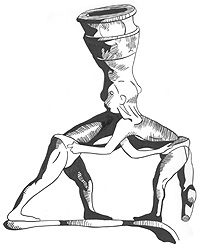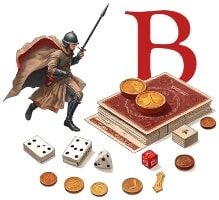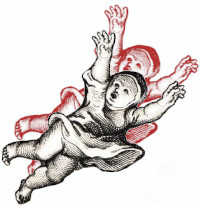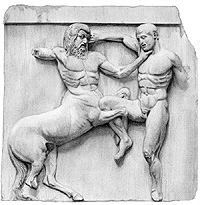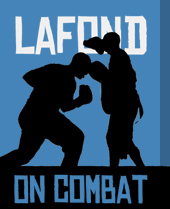Three men squatted beside a desert water hole, a white and two blacks. The white is Amalric, the survivor of a band of criminal mercenaries and one time companion to Conan, with whom he had committed war crimes a plenty. The two black men were of a mixed type. The setting of the story is of the Sudanese type that Howard liked for his Conan character, a place where adventure was a given and where those cities that dotted the desert were multiethnic, with the lighter races tending to occupy the top of the social hierarchy. There is no doubt, that this grandson of plantation owners liked imagining fantastical setting along the lines of his own family heritage, and equally enjoyed peopling the substrata of these fantasy settings with the devils and vile deeds of which his Aunt Mary had told him.
Howard was certainly enamored of both the lost city tale popularized by Edgar Rice Burroughs, and of the figure of Chinese Gordon, a white adventurer that fought heroically in the wars of black and yellow men in distant lands. Winston Churchill actually wrote a poem about shooting “fuzzy wuzzy” heads with his automatic pistol when avenging Gorton’s death at Khartoum, which, to this day, remains a place where brown men rule black men, despite the postmodern liberal myth that all nonwhites live in limitless harmony once freed of the Whiteman’s vile wrath.
A third figure impinges on the scene, returning with a white girl improbably found wandering in the desert:
“The rider was a giant whose skin, blacker than that of the other two, as well as his thick lips and flaring nostrils, told of negro blood in vastly predominating abundance.”
Howard goes on to describe the man in glowing terms of apex masculinity. Although pointing out the relative shade of a black person is, in liberal white circles, a sin worthy of alienation, exile and economic death, it is a common habit among most African Americans and was a basic condition of Howard’s childhood, who listened to stories told by former slaves of vastly different racial makeup.
This is an example of narrative realism in fiction, a taboo practice even in Howard’s time. Recall that the story was never sold, not even submitted as far as I can tell, although the first few scenes run to 10,000 words, and hint at a possible short novel.
Amalric, a desperate character in his own right, is then treated as a stable boy by the giant black, who is a certain Tilutan, the dominant male, a black man, the blackest of them all. The presence of the white woman in their savage midst changes the racial dynamic of their criminal enterprise as the two lesser blacks and Amalric begin arguing and throwing dice over who gets second, rape, third rape and fourth rape, of the human booty.
Moved to a position of racial solidarity, Amalric barely manages to murder his fellows by the lowest treachery. He then, upon being cared for by the girl—for the giant man had nearly kills him—decided to rape her anyway! Her extreme apathy and naïve nature stops him cold, uncomfortable with ravishing a victim that will not even fight him. This begins a transformation in Amalric’s criminal character, which leads, through a hideous adventure, to his becoming a heroic figure. Both Amalric and the girl, Lissa, who is the runaway from a city of dreaming white people preyed upon by some horrible white god, are transformative characters who learn and grow along the story arc.
Howard’s view on the human races is revealed plainly in one exchange between Lissa and Amalric, as he is discovering through conversation that she is from a lost oasis city settled by white scholars in the midst of a desert inhabited by black and brown criminals, which reminds the post modern reader of many a gentrified urban American enclave.
“I realized that you were fighting to protect me from these black men. The people of Gazal have always said that the black people are wicked, and would harm the helpless.”
“That’s no exclusive characteristic of blacks,” muttered Amalric.
Lissa and Amalric develop a real human bound while in the unreal city, where “…he had never seen such vague, kindly faces; their eyes were soft and mild, without fear and without wonder. Yet they wore not the eyes of stupid oxen; rather they were the eyes of people wrapped in dreams.”
The supernatural horror lurking in this dying city of dreams is a good of death in the form of a naked white man of “classic, cleanly carven” beauty. Soon Amalric finds himself stalking “through the house of darkness that was the house of god,” wondering how he might combat the monstrous being. He just manages to defeat the monster through recourse to a chant taught to him by a “black wizard,” in his wanderings.
In fleeing from the accursed city from the uncanny seven black horsemen who pursued them seeking revenge for the slaying of a god, the couple are rescued by none other than Conan, who is depicted as an absolute asshole. He has risen to leadership among the black and brown savages by playing the two races off against each other, and is enjoying the skullduggery.
Reunited with his barbaric friend, Amalric finds himself rethinking the life of crime and killing that the white barbarian continues to revel in, worried now, what he would do if Conan took a fancy to Lissa.
This is no tail of racial hatred, or of racial superiority, simply a tale of two introspective humans peopled by monsters of every hue, including Conan, who seems—in a childish way—the most monstrous of them all.
Most of the stories in which Conan was depicted by his creator in an unsavory and predatory light where rejected for publication. This may be among those casualties of the white hat hero complex. The story of Amalric and Lissa makes a pleasing novelette in its own right, a tale in which a white criminal is redeemed by a naïve white girl in the face of colored criminals, white urban apathy, and a monstrous white monster of a god, feasting upon its people like a great gorging thing from oblivion. As with most of Howard’s arch villains, this reader takes the White Vampire God of Gazul as a metaphor for the bankers and Wall Street investors that Howard blamed for the country’s dire economic plight during the Depression, with Amalric representing one of his many redemptive criminal protagonists out to strike back at a monstrously unjust world.


